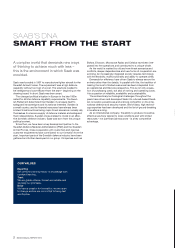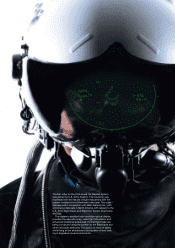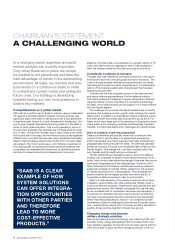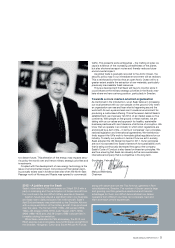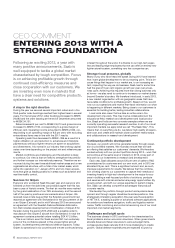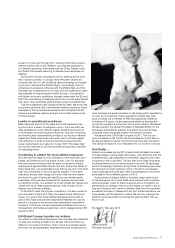Saab 2012 Annual Report Download - page 16
Download and view the complete annual report
Please find page 16 of the 2012 Saab annual report below. You can navigate through the pages in the report by either clicking on the pages listed below, or by using the keyword search tool below to find specific information within the annual report.
12 SAAB ANNUAL REPORT 2012
MARKET AND DRIVING FORCES
INCREASED COMPLEXITY –
AN ADVANTAGE FOR SAAB
Saab operates in a global market with a need for defending borders and territories and
maintaining functionality and security in civil society. The market’s driving forces are linked
to altered threat scenarios and new security needs, as well as increased demand for cost-
efciency. Complexity and change are progressively increasing. Flexibility, cost-conscious-
ness and understanding of the need for change give Saab a strong competitive position.
Increased competition for global
resources – and new geopolitical
conditions
The economic growth rates in Western
Europe and North America are currently
lower than those in Africa, Latin America
and Asia, where – despite continuing
challenges – growth is signicantly higher.
As the world population grows and the
global community develops, competition
increases for resources while economic
growth is in the best interest of all.
Impact and our position:
At a time when competitive dynamics are
changing and new economic relationships
are emerging, conict patterns and secu-
rity needs are altered. Customers demand
integrated solutions from companies that
are highly familiar with international rela-
tions as well as the specic conditions in
local markets. To increase the chances of
being selected as business partner and to
have a portion of development nanced
through government appropriations, it is
important to be established locally.
Based on a strong presence in priori-
tised geographic markets, presence is
further strengthened through the estab-
lishment of six market areas. Read more
on pages 18 and 26–29.
Macro factors have an impact
The global economy has slowed down in
recent years. Decits and public debt in
major western economies call for stringent
austerity programmes, which are reected
in reduced defence budgets. The U.S.
and Canada, however, still stand for the
largest share of global defence spending.
Brazil, China and other Asian countries are
seeing the greatest increase in defence
spending. It is estimated that defence
spending in the Nordic countries will total
approximately SEK 790 billion during the
2012–2017 period (Source: IHS Jane’s).
Impact and our position:
To a growing extent, defence authorities
around the world want access to the best
the market has to offer at the lowest pos-
sible price, regardless of country of origin.
In addition, tested products are evaluated
based on both performance and cost-
effeciency over product lifecycle.
At the same time, demands are increas-
ing for functionality, efciency and the abil-
ity to operate jointly. To a growing degree,
there is a demand for open solutions that
can be integrated into existing equipment
and other suppliers’ systems. Custom-
ers in both military and civil markets want
broad-based, integrated solutions that
include more services: training, support
and maintenance.
With successful efciency improve-
ments and close customer collaboration,
Saab holds a strong position in terms of
delivering customised, efcient solutions.
Read more on pages 10–11 and 19–22.
New cooperation and alliances
with a regional focus
International cooperation, alliances and
missions are crucial to the global com-
munity’s peacekeeping and economic de-
velopment efforts. Meanwhile, regional al-
liances and long-term bilateral agreements
are becoming increasingly signicant. This
is especially true in terms of large defence
orders, which almost always entail major
industrial partnerships – both within and
outside of the defence industry. Large
development projects are also conducted
through public-private partnerships.
Impact and our position:
International cooperation and system part-
nerships require open systems that can be
coordinated and integrated operationally.
Defence orders involving industrial part-
nerships often entail the delivery of part of
the order value through production in the
purchasing country, as well as technology
transfer to that country.
Saab’s systems and solutions are
distinguished by high levels of interoper-
ability, and system integration is our core
competence. This gives Saab greater
opportunities to address the new coopera-
tion patterns and demands for technology
transfer. Read more on pages 14–15 and
20–21.


